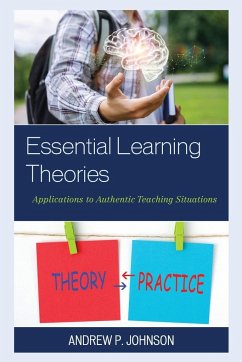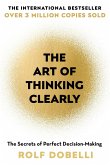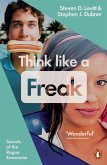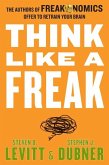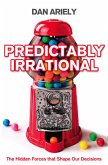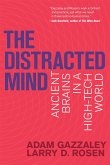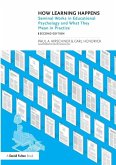- Broschiertes Buch
- Merkliste
- Auf die Merkliste
- Bewerten Bewerten
- Teilen
- Produkt teilen
- Produkterinnerung
- Produkterinnerung
This book describes the basic elements of some of the essential learning theories and their applications for teaching and learning.
Andere Kunden interessierten sich auch für
![The Art of Thinking Clearly The Art of Thinking Clearly]() Rolf DobelliThe Art of Thinking Clearly10,99 €
Rolf DobelliThe Art of Thinking Clearly10,99 €![Think Like a Freak Think Like a Freak]() Steven D. LevittThink Like a Freak11,99 €
Steven D. LevittThink Like a Freak11,99 €![Think Like a Freak Think Like a Freak]() Steven D. LevittThink Like a Freak26,99 €
Steven D. LevittThink Like a Freak26,99 €![Predictably Irrational Predictably Irrational]() Dan ArielyPredictably Irrational14,99 €
Dan ArielyPredictably Irrational14,99 €![The Distracted Mind The Distracted Mind]() Adam Gazzaley (Professor, University of California, San Francisco)The Distracted Mind19,99 €
Adam Gazzaley (Professor, University of California, San Francisco)The Distracted Mind19,99 €![Sources of Power Sources of Power]() Gary A. Klein (Dr.)Sources of Power23,99 €
Gary A. Klein (Dr.)Sources of Power23,99 €![How Learning Happens How Learning Happens]() Paul A. KirschnerHow Learning Happens21,99 €
Paul A. KirschnerHow Learning Happens21,99 €-
-
-
This book describes the basic elements of some of the essential learning theories and their applications for teaching and learning.
Hinweis: Dieser Artikel kann nur an eine deutsche Lieferadresse ausgeliefert werden.
Hinweis: Dieser Artikel kann nur an eine deutsche Lieferadresse ausgeliefert werden.
Produktdetails
- Produktdetails
- Verlag: Rowman & Littlefield
- Seitenzahl: 180
- Erscheinungstermin: 30. Oktober 2019
- Englisch
- Abmessung: 229mm x 152mm x 10mm
- Gewicht: 270g
- ISBN-13: 9781475852707
- ISBN-10: 1475852703
- Artikelnr.: 56970386
- Herstellerkennzeichnung
- Produktsicherheitsverantwortliche/r
- Europaallee 1
- 36244 Bad Hersfeld
- gpsr@libri.de
- Verlag: Rowman & Littlefield
- Seitenzahl: 180
- Erscheinungstermin: 30. Oktober 2019
- Englisch
- Abmessung: 229mm x 152mm x 10mm
- Gewicht: 270g
- ISBN-13: 9781475852707
- ISBN-10: 1475852703
- Artikelnr.: 56970386
- Herstellerkennzeichnung
- Produktsicherheitsverantwortliche/r
- Europaallee 1
- 36244 Bad Hersfeld
- gpsr@libri.de
Dr. Andrew Johnson is Professor of Literacy and Distinguished Faculty Scholar at Minnesota State University, Mankato. He has written 12 books and published over 41 articles related to literacy, learning, and the human condition.
Dedication Preface PART I. BACKGROUND Chapter 1: Theories, Learning, and
Learning to Teach PART II. NEUROLOGICAL LEARNING THEORY Chapter 2:
Neurological Learning Theory Chapter 3: Applying Neurological Learning
Theory PART III. BEHAVIORAL LEARNING THEORIES Chapter 4: Behaviorism -
Classical Conditioning Chapter 5: Behaviorism - Operant Conditioning
Chapter 6: Applying Behave Modification In The Classroom Chapter 7: Social
Cognitive Learning Theory PART IV. COGNITIVE LEARNING THEORIES Chapter 8:
Piaget's Learning Theory Chapter 9: Vygotsky's Learning Theory Chapter 10:
The Information Processing Model Chapter 11: Memory Chapter 12: Learning
Chapter 13: Constructivist Learning Theory Chapter 14: The Learning Theory
of Jerome Bruner Chapter 15: Ausubel's Theory of Meaningful Verbal Learning
PART V. TRANSFORMATIVE LEARNING THEORIES Chapter 16: Humanistic Learning
Theory Chapter 17: Applying Humanistic Learning Theory in the Classroom
Chapter 18: Holistic Learning Theory Chapter 19: Applying Holistic Learning
Theory in the Classroom PART VI. ALGORITHMIC VIEWS OF TEACHING Chapter 20:
Planning for Learning Chapter 21: The Danielson Framework PART VII. END
MATERIAL Chapter 22: Defining Teaching Chapter 23: DEFINING YOUR
EDUCATIONAL PHILOSOPHY
Learning to Teach PART II. NEUROLOGICAL LEARNING THEORY Chapter 2:
Neurological Learning Theory Chapter 3: Applying Neurological Learning
Theory PART III. BEHAVIORAL LEARNING THEORIES Chapter 4: Behaviorism -
Classical Conditioning Chapter 5: Behaviorism - Operant Conditioning
Chapter 6: Applying Behave Modification In The Classroom Chapter 7: Social
Cognitive Learning Theory PART IV. COGNITIVE LEARNING THEORIES Chapter 8:
Piaget's Learning Theory Chapter 9: Vygotsky's Learning Theory Chapter 10:
The Information Processing Model Chapter 11: Memory Chapter 12: Learning
Chapter 13: Constructivist Learning Theory Chapter 14: The Learning Theory
of Jerome Bruner Chapter 15: Ausubel's Theory of Meaningful Verbal Learning
PART V. TRANSFORMATIVE LEARNING THEORIES Chapter 16: Humanistic Learning
Theory Chapter 17: Applying Humanistic Learning Theory in the Classroom
Chapter 18: Holistic Learning Theory Chapter 19: Applying Holistic Learning
Theory in the Classroom PART VI. ALGORITHMIC VIEWS OF TEACHING Chapter 20:
Planning for Learning Chapter 21: The Danielson Framework PART VII. END
MATERIAL Chapter 22: Defining Teaching Chapter 23: DEFINING YOUR
EDUCATIONAL PHILOSOPHY
Dedication Preface PART I. BACKGROUND Chapter 1: Theories, Learning, and
Learning to Teach PART II. NEUROLOGICAL LEARNING THEORY Chapter 2:
Neurological Learning Theory Chapter 3: Applying Neurological Learning
Theory PART III. BEHAVIORAL LEARNING THEORIES Chapter 4: Behaviorism -
Classical Conditioning Chapter 5: Behaviorism - Operant Conditioning
Chapter 6: Applying Behave Modification In The Classroom Chapter 7: Social
Cognitive Learning Theory PART IV. COGNITIVE LEARNING THEORIES Chapter 8:
Piaget's Learning Theory Chapter 9: Vygotsky's Learning Theory Chapter 10:
The Information Processing Model Chapter 11: Memory Chapter 12: Learning
Chapter 13: Constructivist Learning Theory Chapter 14: The Learning Theory
of Jerome Bruner Chapter 15: Ausubel's Theory of Meaningful Verbal Learning
PART V. TRANSFORMATIVE LEARNING THEORIES Chapter 16: Humanistic Learning
Theory Chapter 17: Applying Humanistic Learning Theory in the Classroom
Chapter 18: Holistic Learning Theory Chapter 19: Applying Holistic Learning
Theory in the Classroom PART VI. ALGORITHMIC VIEWS OF TEACHING Chapter 20:
Planning for Learning Chapter 21: The Danielson Framework PART VII. END
MATERIAL Chapter 22: Defining Teaching Chapter 23: DEFINING YOUR
EDUCATIONAL PHILOSOPHY
Learning to Teach PART II. NEUROLOGICAL LEARNING THEORY Chapter 2:
Neurological Learning Theory Chapter 3: Applying Neurological Learning
Theory PART III. BEHAVIORAL LEARNING THEORIES Chapter 4: Behaviorism -
Classical Conditioning Chapter 5: Behaviorism - Operant Conditioning
Chapter 6: Applying Behave Modification In The Classroom Chapter 7: Social
Cognitive Learning Theory PART IV. COGNITIVE LEARNING THEORIES Chapter 8:
Piaget's Learning Theory Chapter 9: Vygotsky's Learning Theory Chapter 10:
The Information Processing Model Chapter 11: Memory Chapter 12: Learning
Chapter 13: Constructivist Learning Theory Chapter 14: The Learning Theory
of Jerome Bruner Chapter 15: Ausubel's Theory of Meaningful Verbal Learning
PART V. TRANSFORMATIVE LEARNING THEORIES Chapter 16: Humanistic Learning
Theory Chapter 17: Applying Humanistic Learning Theory in the Classroom
Chapter 18: Holistic Learning Theory Chapter 19: Applying Holistic Learning
Theory in the Classroom PART VI. ALGORITHMIC VIEWS OF TEACHING Chapter 20:
Planning for Learning Chapter 21: The Danielson Framework PART VII. END
MATERIAL Chapter 22: Defining Teaching Chapter 23: DEFINING YOUR
EDUCATIONAL PHILOSOPHY

